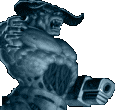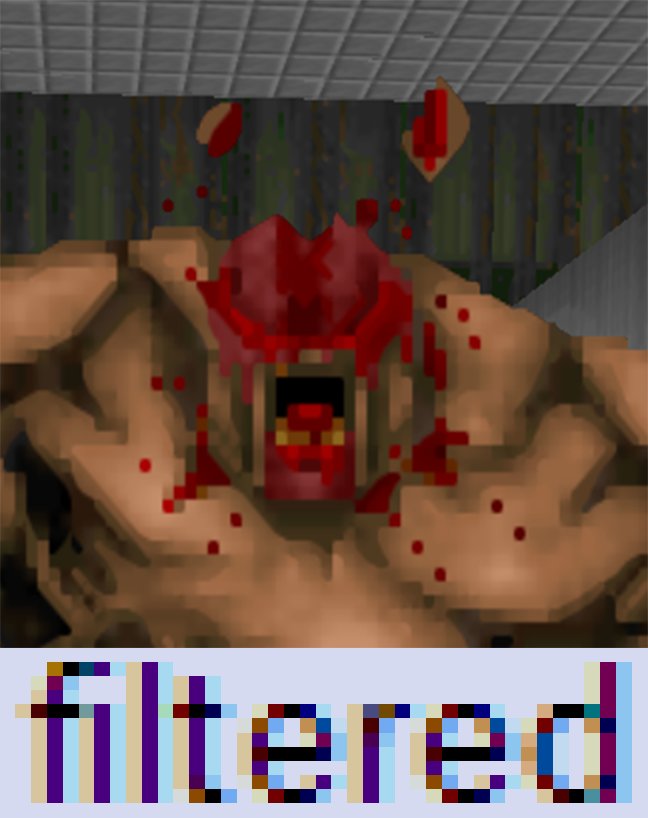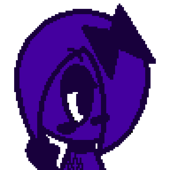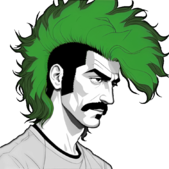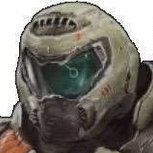-
Posts
391 -
Joined
-
Last visited
About General Roasterock
-
Rank
Stubborn Member

Recent Profile Visitors
The recent visitors block is disabled and is not being shown to other users.
-
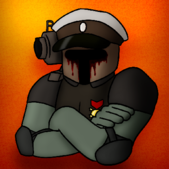
The DWmegawad Club plays: Operation: BIOWAR & Equinox
General Roasterock replied to dobu gabu maru's topic in WAD Discussion
Map 04 At what point does a plan become visible in the layout of a Doom map? It’s not feasible to really quantify the interconnection, reuse, or primary purpose of rooms as they continue to appear in the development process, but there is a certain critical point where you can tell that the creation of some are interconnected. This also goes in the other direction, as most maps that forego forethought and have each next step drawn sequentially are laid bare. Normally this is common in newer work as a definitive style is still being honed, but here we are, at a time capsule filled with a train of thought. Much like a siren steering a vessel towards the rocks, this map opens with what looks like a jackpot for ammo in the form of a zombie mosh pit. There’s about a hundred of them that will kill over with minimal interjection from the player simply due to their inaccurate nature, leaving behind a field of weapons to carry off with you. It is entirely a trick. After leaving the balcony of the Cyber pen, there is not a single point of non-secret ammo placed on the ground except for twenty-eight Shells in the final fight, and one Bullet Box in a secret by the Mancubi. The entire map after the Cyberdemon is a gray hallway filled with Chaingunners, a drip feed of ammo just enough to replace what you used. It is downright mind numbing, only briefly interrupted by a lifeless garage bay here and there. A grandiose space adventure sending me through what feels and looks like an abandoned nuclear bunker should be a premise to run with, but it’s repetitive and simultaneously nerve wracking as the ammo checkpoints come to pass. Comprehending exactly what went into the creation of the Cyberdemon fight is impossible. The Cyber will already be awake by the time you make it to the entrance, which is an extended ride on a very slow lift. The problem here is, due to how long it takes to rise up to the platform and the line of sight available for the duration of the floor moving, that Cyber can lob a rocket into the elevator shaft, killing you instantly. This is clearly terrible, even BPRD thought it was terrible because he attempted to remediate it, and he remediated it, not with a restructuring of the fight, not by holding the Cyberdemon back, not by creating a teleport pad, but by putting down a Partial Invisibility. What kind of brainworm thought this was a good idea? The Blursphere does nothing, the Cyberdemon can still wander over and shoot with a roll of the dice no matter how bad its aim is. It’s placed right in front of the lift controls as to be the unavoidable solution to the potential worst death a player can experience, and all it does is make the following Cyber fight worse. There was a simple problem to solve and the map design failed to do so. So many very minor things pile up on the already towering mountain of nonsense. The music is malformed such that it only plays for around a minute before being silenced for another four. The Megasphere is locked in a secret that can be permanently sealed off from hitting a switch in a group of five where you would have no idea what controlled what on the first time through. The explosion sound is cut off before any of the sustain can play out. Even getting a Plasma Rifle feels reduced because it is immediately tasked to the Cyberdemon in the lab. That first impression of ducking the mass of undead raining hellfire on you between sprays of Arachnotron plasma dwindles down into inadequate acupuncture, and the few rooms that do serve as fights are torn apart with ammo conservation. This level is a trainwreck of thought, digging out individual cubbies to hide supplies that are useful for maybe a couple seconds save the backpack, and lining up so much stop and start gameplay over the course of a potential fifteen to twenty minutes that it could make a man throw up. Blowing up the tubes at the end is the singular saving grace that keeps this map from deserving discarding from the annals of time. -

The DWmegawad Club plays: Operation: BIOWAR & Equinox
General Roasterock replied to dobu gabu maru's topic in WAD Discussion
Map 03 Every time I play something suggested to me coming from BPRD, I feel like I’m being punked. I indulge the fawning over the imagination, character, engineering, and overall artistry far outside of the reaches of the community, and I’m left cleaning up a crime scene, rinsing away the gore a mapping paradigm. What happened? Immediately, anyone that did not prepare for how little ammo is present will find themselves stuck, maneuvering against monsters they cannot shoot, suffering damage they cannot stop. The overwhelming majority of ammo in this map comes from sources that require ammo to be spent in the form of the zombies, with the map treating the avaricious with a whopping twenty bullets already on the ground. This is compounded by the arrival of Pain Elementals, admittedly contained in isolated rooms yet still allowed to move. The ideas of such horridly tight ammo droughts and Pain Elementals are incompatible. Even if you dedicate yourself to chainsawing the souls that get produced, a weapon that doesn’t even appear until halfway through the map yet is seen as Equinox’s cornerstone, you would have to cautiously lead the Souls away from the Pain Elementals line of sight or risk your effort causing another three or four to emerge. It’s obliviousness, failure to understand the game. The one good thing that can be derived from this map is the custom rain created for a singular room that does not reappear for the rest of the map. It is an effect that does good to give the world character through ambient weather patterns, bettering the scale and separation of the location to which you have just teleported. The rest of the visuals are nearly impossible to describe because most of the map is pitch black. Simplistic stretches of claustrophobic cavern, rectangular ventilation ducts, the majority of the lab building across the canyon, huge stretches of gameplay are shadowed in impermeable darkness that strains the vision of the player simply to be able to respond to singular Pinkies. The tunnel east of the canyon is one of the worse offenders of this, funneling you from damaging floor into a hallway where a Spectre might as well be completely invisible. On its own, it would be a nuisance to take potshots to fight both the visibility and the blockmap in these areas, but under the constraint of the ammo problem, it’s asphyxiating, where every shotgun that glides just to the side of a demon is a pained groan. It doesn’t help that this map is as aggravating to navigate as it is. Not considering secrets or getting all kills, it is essentially a straight line through the canyon, vents, and out the back door of the lab. With consideration to those things, it is a repeated cycle of waiting on the ridiculous lifts that compensate for the size of the crevasse. Anything that requires a trip back to the bottom of the ravine adds another lift ride. Taking the Megasphere requires another lift ride since it teleports you from the north side to the south without any fast way back, and clearing out the east tunnel adds another lift ride because progression is blocked by a random wooden bridge found connected to nothing at the bottom of the gap. This pales in comparison to the drab, orthogonal, unilluminated void of the vent maze. At this point, you are either prepared with enough shells to punch through all twenty-seven Pinkies that take up the entire width of the paths, or you’re forced into a scramble somewhere between pistol, punching, and circumnavigating in the few loops that form in the mess of monochrome boxes loosely put together. It is a gameplay sinkhole where missing a shot with the Super Shotgun for any reason means condemnation to tedium. I really don’t know what could be done to salvage this. The best part of a Doom map should not be looking at rain, and yet everything else is abrasive, ugly, and unimpressive. It was hardly worth it just to cross off the list. -

The DWmegawad Club plays: Operation: BIOWAR & Equinox
General Roasterock replied to dobu gabu maru's topic in WAD Discussion
Map 02 Equinox at its best is able to bring its narrative elements out. It does this with four levels that are meant to act like a slowly decaying teleport hub, unlocking a new location with each revisit. Of course, this is impossible for limit removing to properly handle, so it has to settle for being a linear map masquerading as many potential locations without power. It does its job, makes the world feel bigger, and ultimately proves itself as the progenitor to the methodology that Back to Saturn X would use to split its episodes up. Beyond speculation, it is difficult to put more into an analysis of what is essentially one room with connecting monster closets. It definitely fits the role of a nexus for transportation, with so many work stations lined up on the east wall next to a large screen visualizing the entirety of Equinox itself. Having yet another giant planet in such a small office make the setting feel woefully corporate, braggadocious, almost asking for disaster to fall in the form of a demonic invasion. The singular secret is interesting, likely arbitrary for source ports, yet still valuable in the resources it provides. All of this is capped off by a song that holds back enough to put further mystique into a map that can be fully cleared out in thirty seconds. Combat here only consists of Zombiemen, Shotgunners, and Imps, but the lack of significant protection and powerups, and the fact that the Sergeants assault on all sides is enough to hold an attention span. The wave of undead has a relatively easy time working between the halls to follow anyone looking to hide, and the Imps are beefy enough to keep the Shotgun from being a sickle to effortlessly swipe through the crowd. It’s impressive mileage for twenty-seven monsters, more so to get a plurality of zombies to achieve this. It’s not possible for it to be truly difficult for anyone that plays with any amount of caution, but that’s what was allowed. -

The DWmegawad Club plays: Operation: BIOWAR & Equinox
General Roasterock replied to dobu gabu maru's topic in WAD Discussion
That's very insightful, and matches up with the description that was provided on B.P.R.D.'s website. The one in Zzul's Mayhem 17 map is definitely sourced from here, and it's interesting how he was able to provide more context than what currently exists for the wiki on Equinox's page. The actual progression itself feels like it didn't survive manipulation for the MUS file included, but the general idea is still very much clear, and it makes sense for his love of the stars to fall into that source. -

The DWmegawad Club plays: Operation: BIOWAR & Equinox
General Roasterock replied to dobu gabu maru's topic in WAD Discussion
I took a couple cracks at Equinox before I ever really got good at the game and would always get derailed at Map 04, so I'm looking forward to having a reason to clear it out. Map 01 An immediate note to make with the opening shot of Equinox is how it presents contrast. It is entirely longing to be a space epic, to revel in the mind of those that wish to see beyond its boundaries. The opening sprawl of the techbase, with its printed billboard and cascading polished pylons, is such a sight. Structurally, this should inspire awe that is held for the rest of the map, and load visions of sci-fi from the previous decades into our thoughts. This is momentum that the rest of the map simply can’t hold up. On the positive side, the secrets in this map are handled with a curious hand. They’re not terribly difficult, the first being a simple turn away from the grandiose maw of the space station and a trip down onto a beach. The cave is a pique of interest, settled in a way to serve as a home, complete with transportation and a secret treasure stash. It is not elaborated upon after the player climbs back up the stairs, abandoning the character of such profound futurism being housed and scavenged by primitive people. So much of the character of this map is confusing. There are corpses disemboweled and lining the halls, bodies stored in a singular server room, and an entire raid quelled on the stairs leading to the help desk, yet none of it is put into any perspective because of how simplistic the map is. It is dressed in such sheen, connected with energy in the light strips, and refined in the terminals that serve the complex in their affairs with the cosmos, so elegantly communicated through the writing on the headquarters and the decoration of a celestial body in the foyer. There should at least be a view of the sky, somewhere. The other secret path taking the player back outside offers a new perspective on the lot they started in, but it’s back in the same cliffside that already had a shakeup from its oceanside hideout. It’s not even enough of a concern to keep the west switch from having gaps on its sides where you can softlock. Where is the audacity that the front of the building had? The gameplay wants to provide a monsoon of limelight for the updated pistol, visually with an aesthetic retro bulk and audibly with its new punchy, reverberated firing sound that extends on for several seconds, but if you play your cards right you can clear out the entire map without so much as firing it once. The shotgun from the secret cave can do more than enough to clear out the east hallway, giving more than enough ammo to storm the secret path to the Soulsphere to supply for the rest of the map. The behavior is exactly the same, and it only exists to better coalesce with the visual flair of the WAD. Outside of that, this map has the same selection of monster types as Hangar from Knee-Deep in the Dead, so any real attempts at interesting scenarios are impossible. It is more or less a shooting gallery, and anyone that can keep their hand on the trigger will clear the challenges without a hitch. The Shotgunners have their threat removed by the density of health available from the entrance to the complex, scattered about for storytelling and doing little to account for a gameplay loop. The best that they offer is more encouragement to imagine the scenario that would lead to the current condition of the office, perhaps being the perpetrators of the visible carnage. One thing that most definitely doesn’t offer to the environment is the MIDI. Even at reasonably balanced audio levels, it is incredibly loud, overwhelming the firearms of both the zombies and the player. The held choir symphony that shows up about halfway through is particularly abrasive in both its duration and pitch, and the thrashing from the most intense point back to the beginning of the loop is hard to not notice. It doesn’t help that pieces of the music are sourced outside of original composition without any form of credit, so it’s impossible to say how that sample influenced the development of the track. It’s not clear whether technical or cognitive limitations are preventing this map from communicating exactly whether or not the space opera is something to follow along. It is a vastly differing presentation that still roots itself in the cycle of ammo to demon that makes Doom, those roots that appear in weaker form here due to the available units of enemy. It seems to be that there’s a reason why everyone’s immediate first point of laud is the exterior of a now glossy techbase, because the rest of the map cannot carry the weight. -

The DWmegawad Club plays: Operation: BIOWAR & Equinox
General Roasterock replied to dobu gabu maru's topic in WAD Discussion
Map 17: Sacrilege I don’t have that much to say on yet another meander through currently the most boring rooms in the WAD, but I will give some appreciation to how the boss monsters are used. The Cyberdemon is a pretty interesting obstacle to negotiate when you have to rush between the two main progression rooms, and it’s really funny that he can get stuck in the Red Teleporter and telefragged with minimal finagling from the player. The Mastermind, a monster that has now been pretty frequent in use across these maps, is just enough discouragement to keep from interacting with the raising and lowering rock pillars, which I figured would be much more annoying than it actually was. Map 18: Die Heuschrecke As token as an Icon map can get, not at all helped by how much BFG you’re allowed to sling at very meaningless threats. I enjoyed the brief powertrip, and any WAD with the ingenuity to have the player go inside the boss to kill it is really cool, but everything else that is very clearly riffing on Last Call from Evilution is entirely forgettable, and passes by quick enough to where that fact is not remediable. Summary I think it’s entirely fair criteria that good work in Doom mapping should at least surpass the original IWADs in some areas. Mark Klem’s original score, entirely repurposed for this WAD, provides much of its staying power, and it succeeds when those elements work together. Any of the maps that went all in on the atmosphere, like Biolabs, Absolution, even Frozen Terror for its simplicity, they are what allowed the ideas of dread and drama to survive Plutonia. Its imagination sees runs of narrative that its custom content is easily able to convey. The more chemical, mutagenic form of demonic engineering is clear. Of course, it goes without saying that a lot of the layout scope and intensity is below the bar of even amateur work of the time. This comes after several Chords, STRAIN, Requiem, hell even Evilution beats a lot of this set’s worst. The time it has to talk doesn’t improve the quality of its ideas, evident in the last stretch from The Killing Fields onward, and good fights are entirely driven by the player deciding to make them dangerous and exciting. Exposing yourself to Masterminds, watching hitscanner parties fall apart, these are probably not things that were thoroughly considered to intentionally make the maps interesting. The flexibility is very low, and from what I watched Pseudonaut do, there looks to be very few optimizations to these maps beyond simply being good at the game. It’s a period piece, one I probably wouldn’t be curious about outside of sharing it with others. Operation: Power Rankings -

The DWmegawad Club plays: Operation: BIOWAR & Equinox
General Roasterock replied to dobu gabu maru's topic in WAD Discussion
Map 15: Heat Maybe it’s just the super lava chewing through my radsuit without a care, but this map got pretty hard. The first big exposure to the running lava is a really intense visual, with the lighting contrast being as it is. I could imagine something similar being in a Benjogami production and feeling right at home, with the gameplay being equally puzzling, putting the Super Shotgun in the lava such that you need the closest Radiation Suit to grab it without putting yourself at a horrible disadvantage. On the other hand, I’ve already forgotten most of the combat, outside of the tight negotiation with the Baron before the jump to the Arch-Vile room. My memory is clouded in rocks and run and gun corridor Imps and Chaingunners, now a comfortable norm in the maps here. Map 31: Juggelo Funhouse Oh what the hell ever dude. I have absolutely no weight as to what is going on with the Insane Clown Posse, nor have I ever heard them referenced in anything outside of a joke, so all I got out of this map was yet another wheelhouse with pretty middling encounters. A lone Chaingunner teleports into my back, a Spider Mastermind hogs up two bulk cells and fifteen seconds, four fucking Barons of Hell asked to be taken out back to the Hell Revealed barn and put down, and the WAD’s first Cyberdemon is dropped into a more forgiving and open arena than Tower of Babel. All of this is asking for revisits as the map progresses such that the BFG at the exit can be made use of against all these larger foes to avoid the other boring solutions. At least it’s digestible, being incredibly quick for a late game map, so it’s over before the jpegs become eyesores. This is definitely a product of its time. Map 16: The Killing Fields Exhausting, extremely long, and pretty damn boring outside of the few points that strained my eyes. I consider myself very lucky to not have picked the wrong path so many times in this map, as it is pretty difficult to tell which way is correct when all you have to go on are doors that turn out to be locked when you approach them. Most of the imagination has left, now leaving so much empty space the lap back around through similar to Skybase. The tangle of vines that ultimately leads to Pinkies, the maze of Skull Cubes that leads you into individual Imps and Chaingunners, the singular Cacodemon stuck in the basement on the route to the exit, all of this is violent stop and start, only manageable with a Super Shotgun ammo supply that’s unreliable at best. It doesn’t help that the switch that raises the bridge to the way out can be pressed from below its rock plinth, ending the longest map in the WAD in about half a minute. The ideas are too scatterbrained for the map to be as large as it is, having just enough jungle and red to call it a mesh of hell, as well as a bunch of other rooms that are honestly too simplistic to really pin any meaning to. This wasn’t fun. -

The DWmegawad Club plays: Operation: BIOWAR & Equinox
General Roasterock replied to dobu gabu maru's topic in WAD Discussion
Map 14: Absolution Every now and again, I love a map that feels evil. The Memento Mori II OST has done a lot of lifting for this set, but Absolution is more than capable of walking side by side with it. The oppressive coverage by the Chaingunners, the scale in the outdoor sections being the most believable thus far, the multitudes of demonic iconography, everything bleeds. Ambushes are actually a surprise here due to the fact that everything else is dripped in so slowly after that first initial rush through foes to the pretty blatant River Styx reference. Man, Habin liked Evilution. A replay definitely improved my experience with it even further, as I was able to choose the correct of the two secret teleporters to get to the Super Shotgun, giving new life to the shells I had collected previously. The second by second is nothing terribly impressive, but the ebb and flow of working your way to a significant fight like the church or the courtyard is about the best in terms of navigation that Biowar has. It’s thrilling enough. -

The DWmegawad Club plays: Operation: BIOWAR & Equinox
General Roasterock replied to dobu gabu maru's topic in WAD Discussion
Map 13: UAC Prison I am entirely realizing my mistake. I invoked the beast. I called out for more John Bishop while knee deep in the 90s, and I am now looking at the color of sound. What the fuck just happened? For a time, I felt my impact on cause and effect had lessened. Not only did this map feel like 40% switch, but every interaction with one, whether it was a lift or otherwise, would send a wave of Shotgunners to flood the room I was currently in. This happened at least half a dozen times, not even considering the main room in front of the exit that repopulates three times as well, enough to start another useless conversation on slaughter. I didn’t feel like I was making progress, but rather that I was simply pushing through one more horde to the next “release the shotgunners” button ad nauseum until the map somehow finished. The only other notable piece of combat I can remember is the pit of lava, in a prison mind you, that had Pinkies charging single file out of the tiniest room like a clown car. I had a pretty short fit of psychotic laughter just staring at the visual of all those Demons somehow perfectly in line before getting back to throwing bullets at whatever was in front of me. Making sense of the contraptions around me was completely out of the picture. I’ve always found the concept of a demon, a being of malice normally personified as only wishing to torture human souls, being held in captivity to be incredibly silly, and the only true blooded prison section requires jehova’s witness style door to door clearing of every cell before dumping another Shotgunner Shitflood on top of you. They’re not even hard, because having one hard corner to duck behind allows for half the group to die to infighting without threat. UAC Prison is a bloated map, high above the monster count of just about anything else here, and so manically layered together that I doubt I’ll forget it anytime soon. Now I know I’m excited for anything else John Bishop has in his discography. -

The DWmegawad Club plays: Operation: BIOWAR & Equinox
General Roasterock replied to dobu gabu maru's topic in WAD Discussion
Map 12: Military Center When all you have are three keys, every map starts to look like Tricks and Traps. I wasn’t entirely convinced on the comparisons made in this thread for Terror Core, but abstracting the two out enough does put them in a similar field. Again, three keys, three stretches of privately maintained mess hall + 1 exit bout, and a bunch of revisiting a central structure to pick up the arbitrary points of continue. It’s Wheelhouse design. The best strength this map has going for it is the Plasma Rifle, filled with just enough ammo to burn through anything, if you include the supply in the secrets. It’s actually pretty funny that Horus mentioned Hanger for Map 06, because I was getting the same feeling navigating the southeast outpost, being pretty close to that Evilution map’s Yellow Key run. It’s a shame that the ice theme was so quickly discarded, seeing a frozen over outpost would’ve likely made this one stick a little better. -

The DWmegawad Club plays: Operation: BIOWAR & Equinox
General Roasterock replied to dobu gabu maru's topic in WAD Discussion
Yeah good catch, I guess that a lot of the Final Doom map names have subconsciously caught up to me. -

The DWmegawad Club plays: Operation: BIOWAR & Equinox
General Roasterock replied to dobu gabu maru's topic in WAD Discussion
Map 11: Frozen Terror Admittedly carried by Midnight Call for most of its runtime, Frozen Terror has an ironically hot first half. The icy texture used gives a really cool impression of being stuck in the side of a glacier, but looking at it through a cynical lens makes it out as an excuse to omit any work in detailing and set dressing, putting it on par with Dark Woods. Nonetheless, it’s far more creative of an application than that bomb, and navigating its few bits of platforming does a lot to make the world feel vast. The fights ranged from mediocre to neat, with the pair of Barons in the dark and the descending elevator that repopulates with Imps and Arachnotrons being at each respective end of that spectrum. It’s a good theme, one that I hope to see elaborated on. -

The DWmegawad Club plays: Operation: BIOWAR & Equinox
General Roasterock replied to dobu gabu maru's topic in WAD Discussion
Yeah I don't really understand the MIDI complaints either. I went back in again to check if it was actually broken or just quiet, and it was definitely the latter, doing just enough to fill in the cracks and settle the atmosphere. Biolabs is the best effort in that regard without question. Map 09: Security Every time I see a run on the DSDA channel of Enigma, I feel like I’m in a stupor induced by substances. Masses of gray interrupted by the downright insane custom texturing flash by the screen constantly as Doomguy scrambles around incomprehensible verticality is definitely something that has tainted my view of WADs that import these giant textures that crumble under the foot of the palette. There’s a lot you can tell about cohesion of a map from looking at its resources, and after cutting through eleven secrets, this map definitely did not worry about that very much. If the gameplay wasn’t as fun as it was, I don’t think I’d ever want to look at this one again. There are actually some surprisingly tough encounters for what Security gives you. Two Revenants on a relatively small platform without so much as the Super Shotgun to arm you is grindy and painful, but having the secret Berserk requires you to test your knowledge regarding their payback missiles. The undodgeable one in the corridor was a bit of a shock too, easily brushed off with one of the secret BFGs but nearly guaranteed damage otherwise. I did like the Arch-Vile encounter, distracting you with Pinkies only for the Vile to pick up the Shotgunners lining the floor below you. It’s just that most of these fights end up getting nullified by the simple torrential amount of ammo and supplies that come out of the secrets, which aren’t even that hard to find, while the actual weaponry you’re provided is so deep in the annals of the map that it’s basically pointless by the time you get to it, like the Rocket Launcher. Again though, it does play fast enough to not stink up the place, and the BFG makes my day in nearly all instances. Map 10: Dark Woods WOW what a hunk of shit. Visually discardable, no pulse on Doom fun due likely to hoping everyone would simply play continuous, entirely linear and one note, this is the kind of map that gets lost to one of those huge compilation CDs never to be seen again. I wouldn’t wish Dark Woods on my enemies, and I considered just telling the good people here ahead of time that it’s just that bad. Nothing else to mention, nothing worth remembering. -

Operation Biowar demos [-complevel 2]
General Roasterock replied to TendaMonsta's topic in Speed Demo Submissions
Map 16 UV-Max in 7:52.49 Map 17 UV-Max in 6:17.66 Map 18 UV-Max in 1:11.57 -

The DWmegawad Club plays: Operation: BIOWAR & Equinox
General Roasterock replied to dobu gabu maru's topic in WAD Discussion
Map 08: Biolabs The benefit of calling Doom a horror game is that it allows for authors to really dig into the scenarios they want to present. They can go beyond making a handful of brown and gray shooting galleries, and put together real scenes of grotesque venture. From what little story we get in Biowar, it’s enough to put together an explicit, extensive gene splicing supercenter that continues to engineer and iterate on demons. The entire building glows with rancid energy of multiple colors, the demons are engrained enough in the functionality to have diagrams and studies on their operating tables, larger creatures are trapped in pits and behind cages, everything reeks of enslavement and death. The ambushes are all meant to overwhelm, such as the Pinky jump after the Red Key and the Knights guarding the laser control. My favorite moment in the map goes against all that though, as you take the Rocket Launcher from the holding pen of a Mancubus after being drip fed so many individual rockets to stockpile, and overwhelm yourself with catharsis as it mulches a wave of Imps and Cacodemons that arrive to answer you. It definitely helps that the music stays out of the way for the most part, with very few plucks and strings to keep the tone together. It sounds like something I’d expect Snaxolotl to produce, but a good 20 years before any of those tracks would come to light. I’m even happy with getting a look at the outside of the building. Even with it being as bland and one note as it is, just the size of it is enough to suggest something about the operations the UAC are conducting in this timeline. I kind of love this map, I love its contribution to the emotional aspects of Doom mapping, and I love that it suffers none in completing its goals. It’s brilliant.
